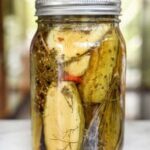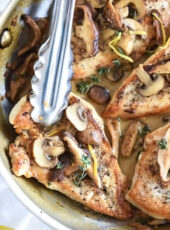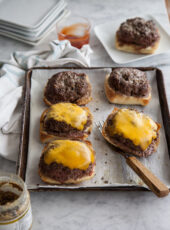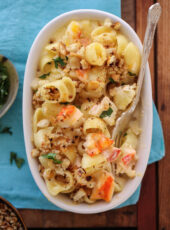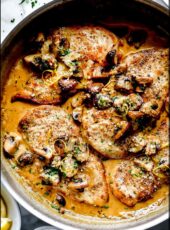Fresh garlic, homemade pickling spice, and chili peppers give this easy, traditional homemade dill pickle recipe a seriously delicious, spicy kick and awesome flavor.
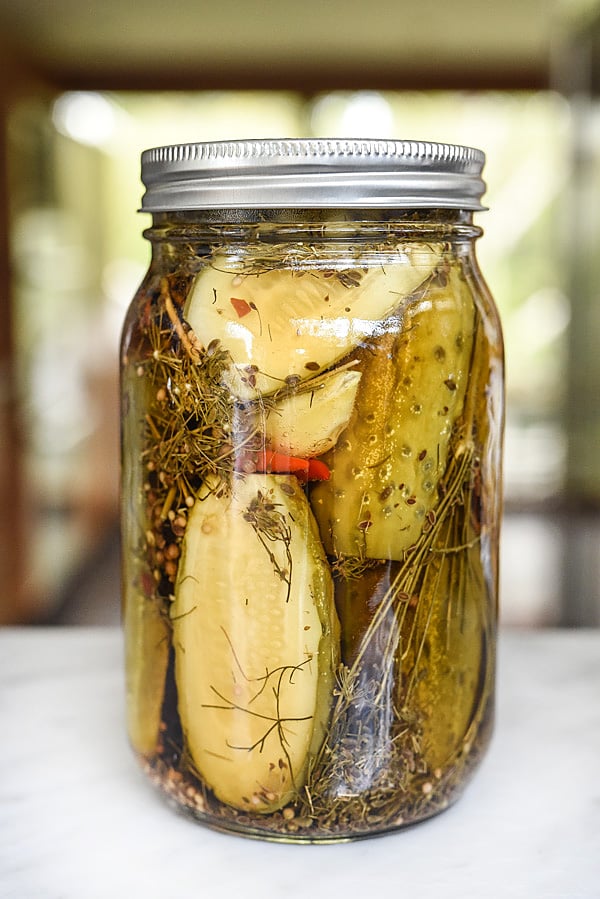
Every summer I make plans to can a few jars of spicy garlic pickles to match the taste of a jar I picked up at one of our farmer’s markets that left me slack-jawed and puckered. Because as a self-professed pickle-head, I always want more. I’m a self-professed pickle-loving queen, as evidenced by my recipes for spiralized refrigerator quick dill pickles and my zesty bread and butter pickles. This spicy pickle recipe matches everything I crave about a spicy pickle: Garlic, dill, and a little bit of heat with a whole lot of crunch. It’s based on a recipe I heard about on NPR’s All Things Considered Lost Recipe series. The listener wanted to recreate her aunt Minnie’s secret pickle recipe, but only had a few details to go by. To reverse engineer the recipe, NPR turned to no other than the doyenne of canning on the www, Marisa of Food In Jars, who supplied some very helpful intel for pickling pickles, and the base for this homemade dill pickle recipe.
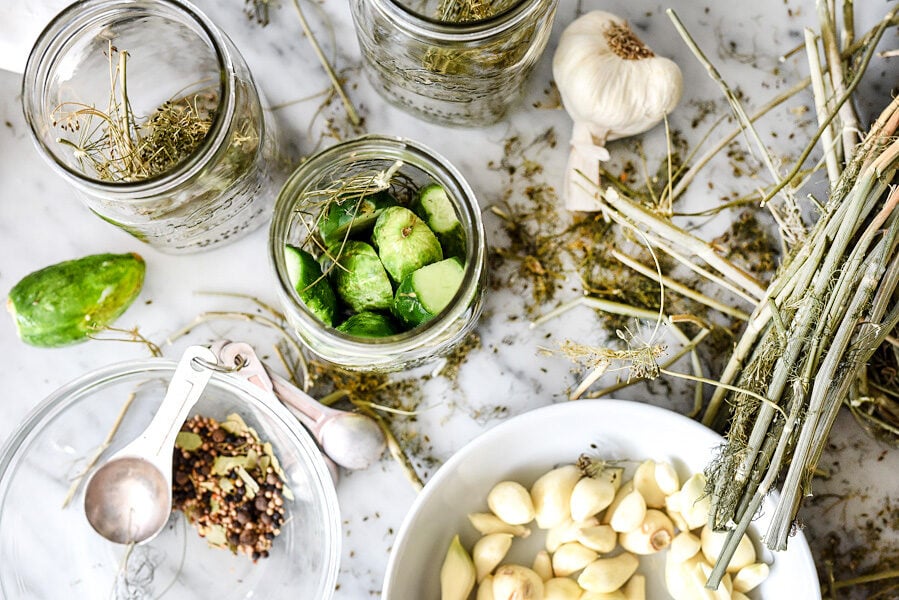
In This Post
What’s in This Dill Pickle Recipe
With garlic and Thai chili peppers added to the pickling brine, these dill pickles have a spicy kick. And they’re exceptionally flexible to fit your taste. Can them so they last for months or make them refrigerator pickles if you plan on eating them more quickly. Feel free to leave the chili peppers out if the heat isn’t your thing. If your cucumbers are bigger, cut them down to fit. Or, if you really love garlic, toss more in, or leave it out.
I use half cider vinegar and half white vinegar in my brine because white vinegar gives these pickles more pucker.
Here are the ingredients for this dill pickle recipe:
- Pickling cucumbers
- Apple cider vinegar
- White vinegar
- Water
- Pickling salt
- Dried dill weed (not fresh dill)
- Thai red peppers, or other spicy chili such as habanero
- Garlic cloves
- Homemade pickling spice (ingredients listed below)
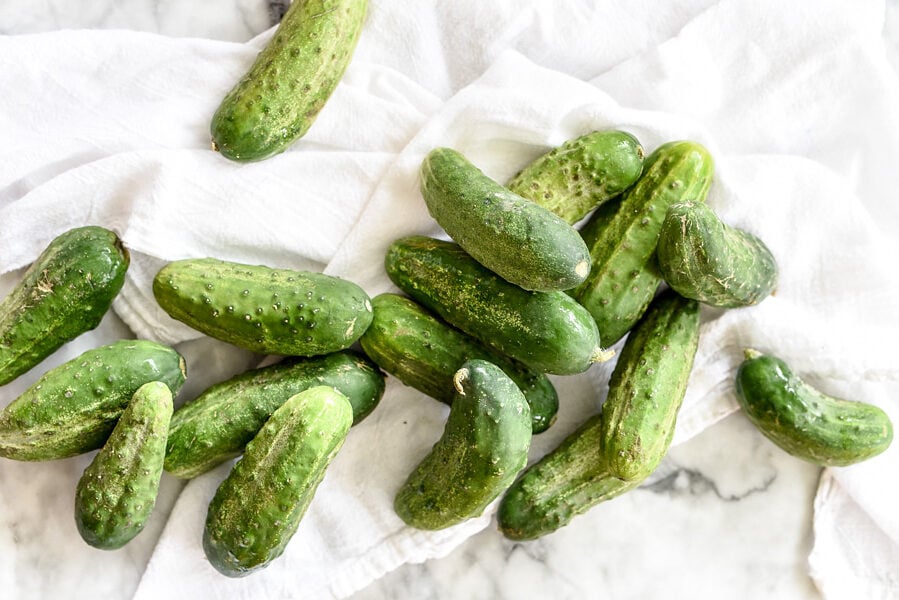
What Type of Cucumbers Are Best for Pickling
Choose firm, green cucumbers that don’t have a lot of blemishes or discoloration.
For quick pickles or refrigerator pickles, like in my refrigerator pickles recipe here, choose a thin-skin cucumber that absorbs the vinegar solution easily. Regular garden cucumbers, Persian cucumbers, or seedless English cucumbers work well.
For canning cucumbers, choose a sturdier cucumber with thicker skin like kirby cucumbers that will hold their snap after brining in the vinegar solution.
Which Vinegar is Best for Dill Pickles
There are so many different types of vinegars out there, and while I love apple cider and rice wine vinegar for certain types of pickles, when it comes to dill pickles, distilled white vinegar is your pal. It’s a more mild smelling and flavored vinegar, has an ideal level of acidity, and since it’s clear, it won’t turn your pickles a funky color.
I use half cider vinegar and half white vinegar for a delicious tangy pucker.
Plus, there’s a good chance you already have this vinegar hanging around your kitchen (it’s a workhorse – great for baking when you’re in a pinch and don’t have any buttermilk, great in ranch dressing, and it’s an excellent multipurpose cleaner)!
How to Make Dill Pickles Crisp When Canning
Small, firm cucumbers (kirby or “pickling cucumbers”) are key, and you want to can them as quickly after you buy them as possible. These young cucumbers have fewer seeds and contain less water, so their flesh is already nice and firm.
I haven’t experimented with this, but I’ve read you can soak your cucumbers in an ice bath for 20-30 minutes or up to overnight, before canning, to also help the cukes retain their crispness. If you’ve tried this before, definitely let me know!
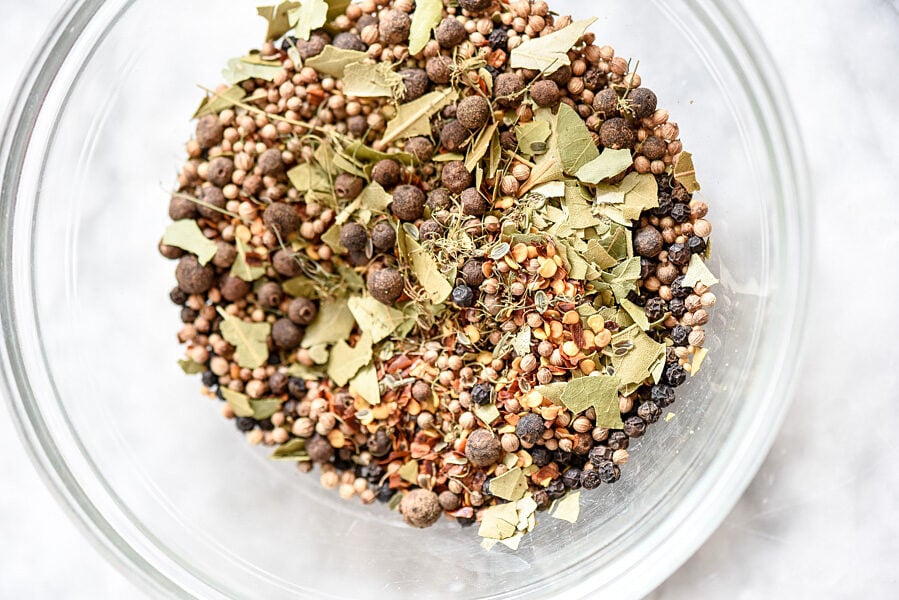
How to Make Homemade Pickling Spice
This recipe starts with the homemade pickling spice mixture suggested by Marisa in the NPR segment, with some slight alterations. I cut down on the amount of allspice and I left out the red pepper flakes since I knew I was going to be adding whole, split Thai chiles for heat.
Ingredients for the pickling spice blend:
- Black peppercorns
- Mustard seeds
- Coriander seeds
- Dill seed
- Allspice berries
- Crushed red pepper flakes (if not using fresh chiles)
- Bay leaves
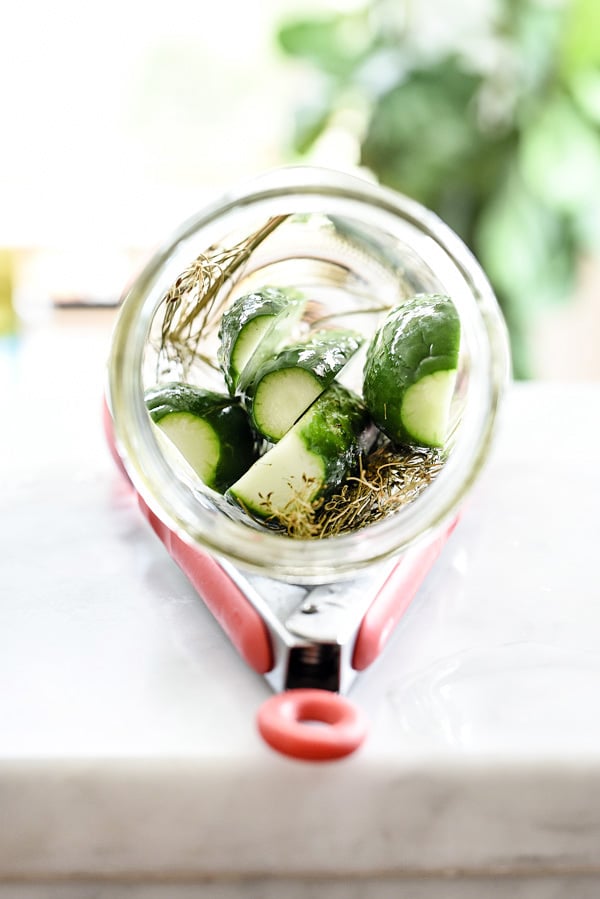
How to Make Dill Pickles
First, prep the pickling jars. Wide mouth mason jars that are easy to stuff are essential for canning pickles. If canning, sterilize the jars and lids by running them through the dishwasher or boiling them in an extra large pot of water for 2 minutes per jar. If you’re not canning the pickles, simply wash and rinse the jars and lids in hot water.
Prep the cucumbers and trim the ends before pickling. To avoid limp pickles, always rinse the cucumbers well and trim the bloom end of the cucumber to prevent spoilage. Half of the time I wasn’t sure which was which so I just trimmed both. I like safer than sorry. Leave the cucumbers whole or slice the cucumbers into spears or coins with the skin on.
Pack the Pickles
Start stuffing and packing the jars. To each jar, add a few tablespoons of the pickling spice, 2 or 3 fronds and stalks of dried dill weed, 2 or 3 Thai red peppers, and a few whole garlic cloves. Then, pack the cucumbers (whole or sliced) into the jars so they are tight but aren’t damaged in the process.
PICKLE PACKING TIP: To easily pack the jars and keep the cucumbers from tipping over as you do, tilt the wide-mouth canning jars at an angle on tongs. Then, pack the jars in layers of cucumbers and dill. Stuff away, pickler!
Add the brine. Next, bring the vinegars, water, and salt to a simmer in a large stock pot. Pour the brine over the cucumbers in the jars, leaving about ½ inch headspace.
Tap to release air bubbles. Tap the jars on the counter to release any air bubbles between the brine and pickles then top with the lids and screw tight.
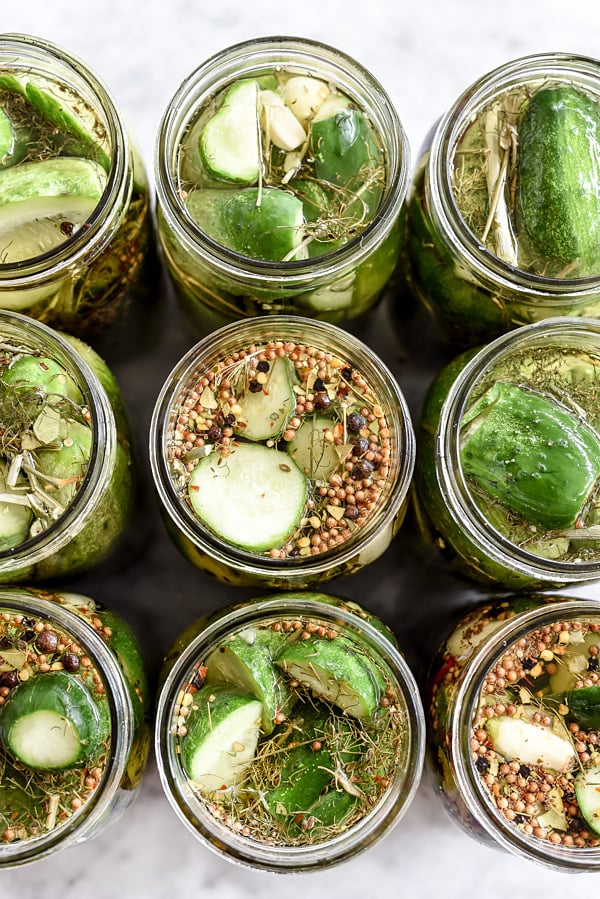
How to Can Pickles
- Fill a canning pot with water and bring to a boil. Allow enough room so that when the bottles are added the water doesn’t overflow.
- Wipe the rims of the jars and use tongs to place the sterilized lids and rings on top of the jars.
- Process in a canner water bath for 10 minutes.
- Remove the jars from the pot to the counter topped with a dish towel to cool.
- Make sure the lids pop down to show they are sealed. Refrigerate the jars of pickles that don’t pop and eat them as refrigerator pickles.
How Long Does it Take to Turn a Cucumber into a Pickle?
At what point does a cucumber become a pickle? Patience is a virtue, my friends. I let these babies sit for about 10 days before I eat them (though you can try them in u). My mom likes to let hers sit for 3 months. I’m not sure how she can hold out that long, but like most things, they do get better with age.
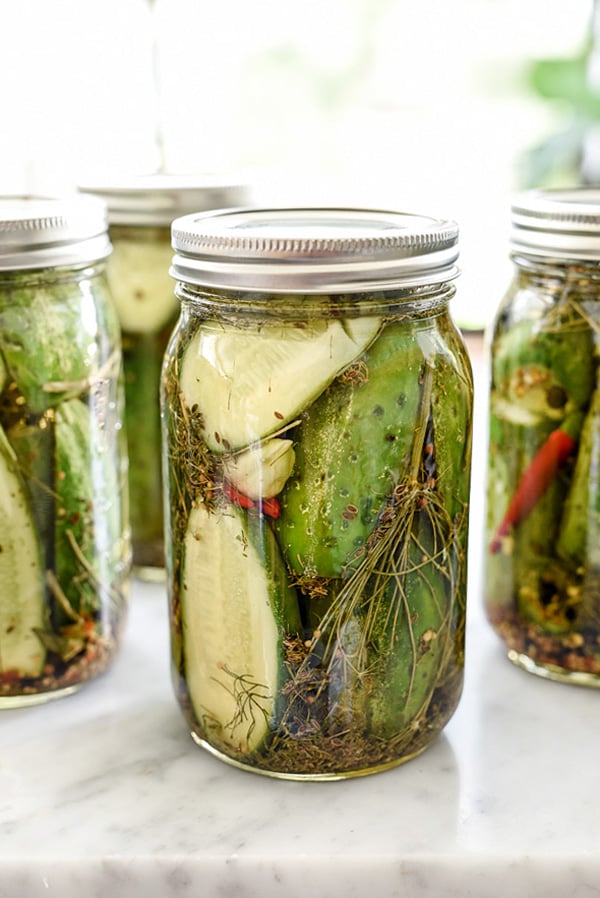
Can I Make These as Refrigerator Pickles?
Yes you can! For refrigerator pickles, skip the hot water bath and place the jars directly into the fridge instead. They won’t last as long and won’t be shelf-stable, but will last in the fridge for 1-2 months.
How Long Are Homemade Canned Dill Pickles Good For?
Store these in a dry cool place and they’ll just get better even better over time. They can be stored for up to 1 year. Just don’t forget to refrigerate any jar you open!
What to Serve With Dill Pickles
- Pulled Pork Sandwiches With Crunchy Slaw
- The Best Garlic Burgers EVER
- Bacon Cheeseburger With Caramelized Onions
- How To Make A Healthy-Ish Fried Fish Sandwich
- How To Build A Better Sandwich
Killer Spicy Garlic Dill Pickle Recipe
Ingredients
For the Homemade Pickling Spice
- 2 tablespoons black peppercorns
- 2 tablespoons mustard seeds
- 2 tablespoons coriander seeds
- 2 tablespoons dill seed
- 1 tablespoon allspice berries
- 1 teaspoon crushed red pepper flakes
- 10-12 bay leaves crumbled
For the Spicy Garlic Dill Pickles
- 10-12 pounds pickling cucumbers scrubbed clean and kept whole or sliced
- 2 cups apple cider vinegar
- 2 cups white vinegar
- 4 cups water
- 5 tablespoons pickling salt
- Homemade pickling spice recipe above , 2-3 tablespoons per jar
- Dried dill weed from a 2-ounce package 2-3 fronds and stalks per jar
- 10-18 small Thai red peppers split down the middle but not separated, leaving seeds intact (2-3 per jar)
- 20-30 whole garlic cloves peeled and lightly smashed (4-5 per jar)
Instructions
For the Homemade Pickling Spice
- Add all of the ingredients to a small bowl and stir to mix.
For the Spicy Killer Garlic Dill Pickles
- Prepare your jars and lids for canning. I run my jars through the dishwasher to sterilize and remove them while still warm. Add the lids to a small pot of simmering boiled water to pull from for the canning process.
- In a large stock pot to avoid contaminationbring the vinegars, water and salt to a simmer.
- To each sterilized jar add: 2-3 tablespoons of pickling spice, 2-3 fronds and stalks of dried dill weed, 2-3 Thai red peppers depending on your preference and 4-5 whole garlic cloves to each jar. Pack the whole or sliced cucumbers into the jars so they are tight but aren’t damaged in the process. The cucumbers should sit below the neck of the jar. Trim the cucumbers if they’re poking up too high.
- Pour the brine into the jars leaving ½ inch headspace, just covering the cucumbers.
- Wipe the rims of the jars and use tongs to place the lids and rings (that have been sterilized in simmering water) on top of the jars. To avoid contamination, do not touch the lids where they sit on the jars with your fingers.
- Process in a canner water bath of boiling water for 10 minutes. Remove the jars from the pot and allow them to cool on a dishtowel on the counter. As the jars cool you will hear them pop as they seal. Sealed jars should feel solid when tapped and be concave in shape.
- Store in a dry cool place. Pickles will be ready to try in about 7-10 days but get even better over time. They can be stored for up to 1 year.
Notes
- To make these as refrigerator pickles, skip the hot water bath and place the jars directly into the fridge instead where they will last for 1-2 months.
- Did you know in Eastern European cuisine, vinegar and bay leaves are not traditionally used in pickling recipes? Reader DML kindly wrote us to let us know and I was so surprised! All my life I’ve always thought you couldn’t make pickles without vinegar. But you can, and the natural fermentation process is called “lacto-fermentation.” The more you know!
